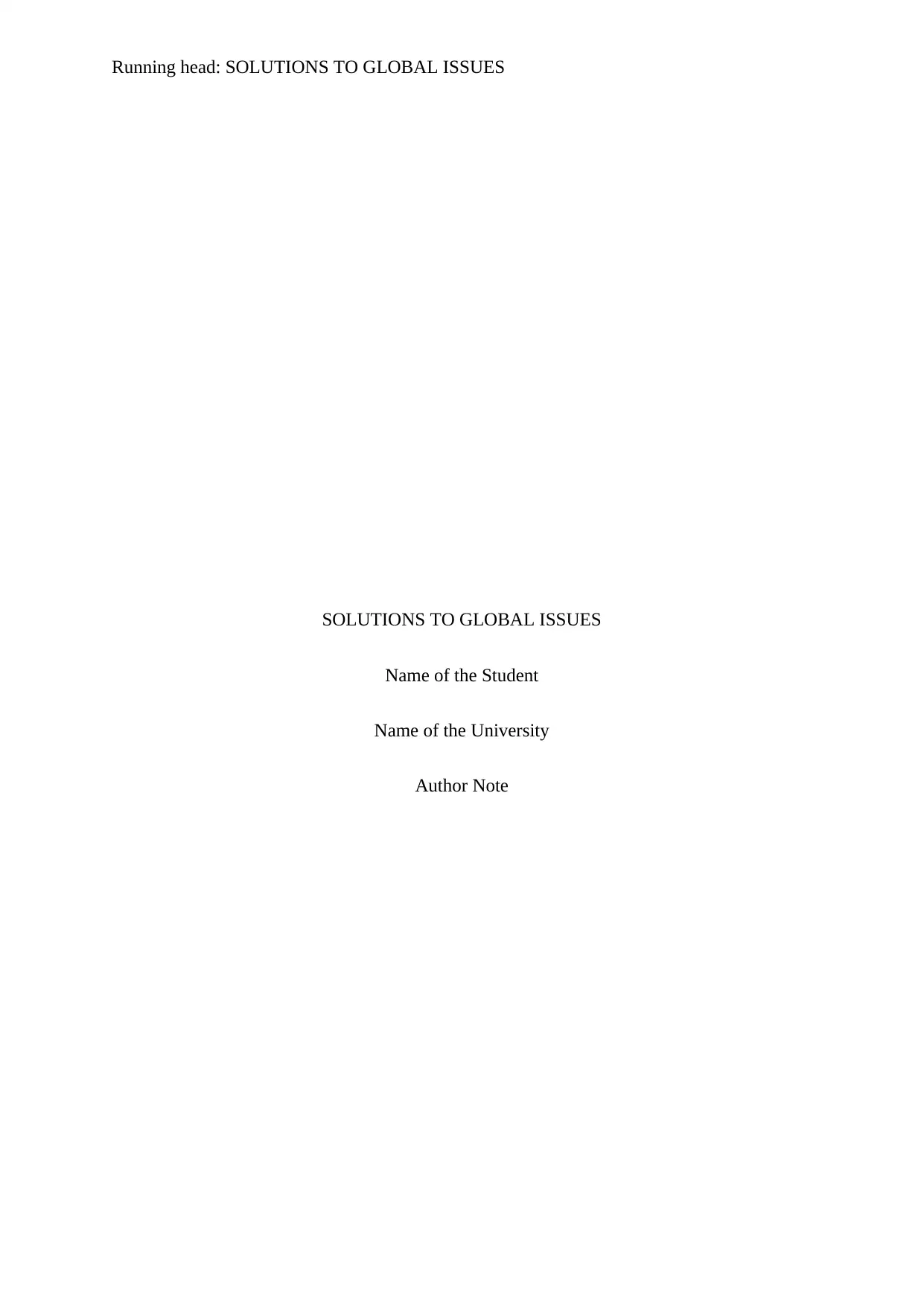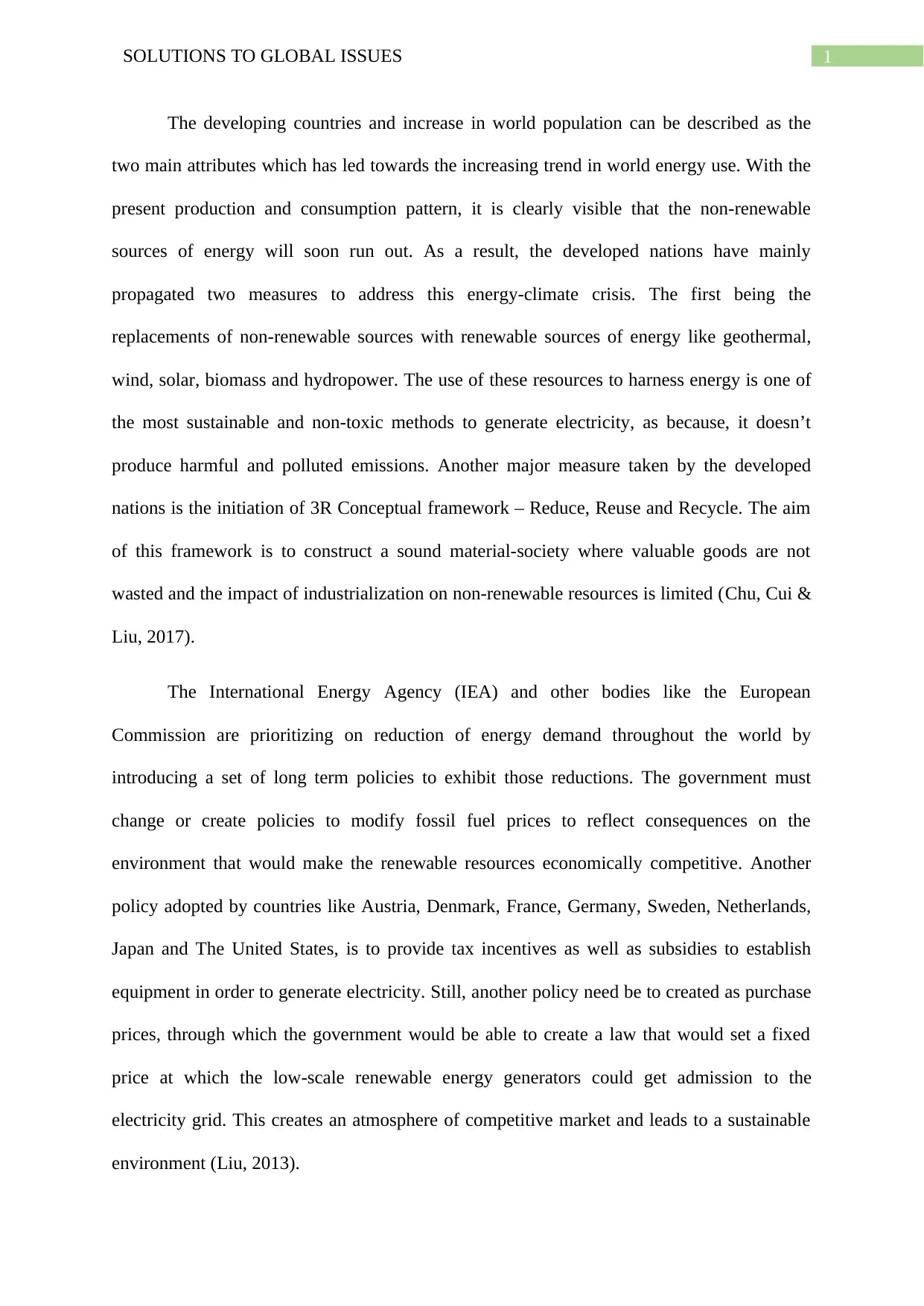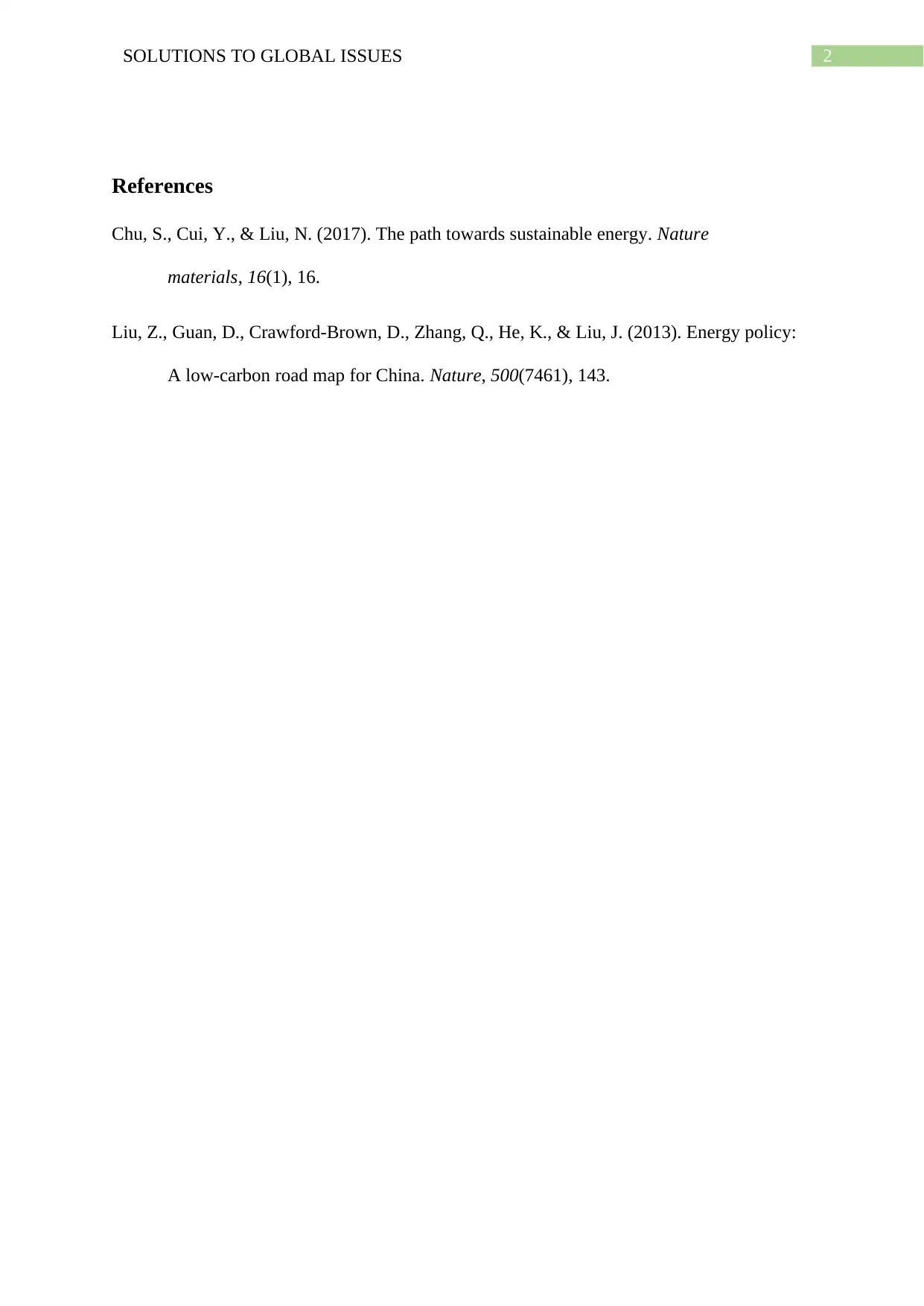Report on Solutions to Global Issues: Energy Use - [Course Name]
VerifiedAdded on 2022/11/03
|3
|467
|50
Report
AI Summary
This report addresses the global issue of increasing energy demand, primarily driven by developing countries and population growth, and its reliance on non-renewable resources. It highlights the shift towards renewable energy sources like geothermal, wind, and solar, as a sustainable alternative to reduce harmful emissions. The report also emphasizes the 3R framework (Reduce, Reuse, Recycle) to minimize the impact of industrialization on non-renewable resources. It discusses policy recommendations by the International Energy Agency (IEA), including tax incentives, subsidies, and purchase prices to promote renewable energy adoption and foster a competitive market. The report references key studies that support the findings and provides a comprehensive overview of the subject matter.
1 out of 3










![[object Object]](/_next/static/media/star-bottom.7253800d.svg)